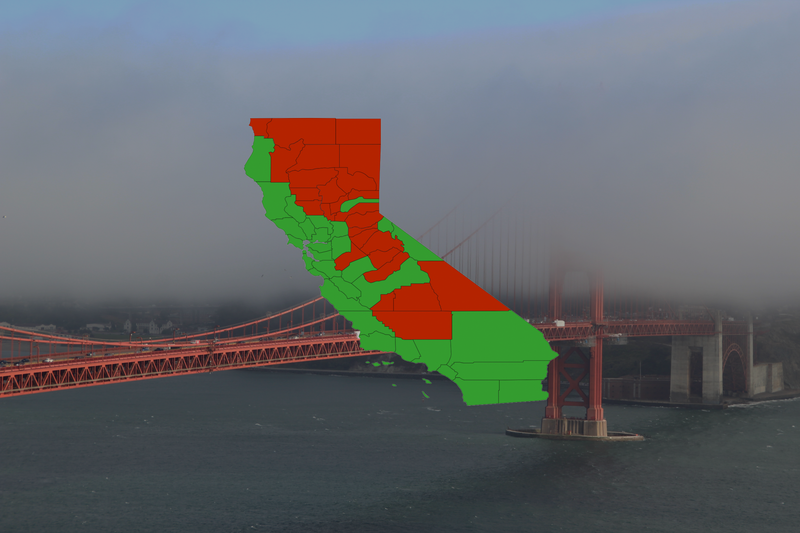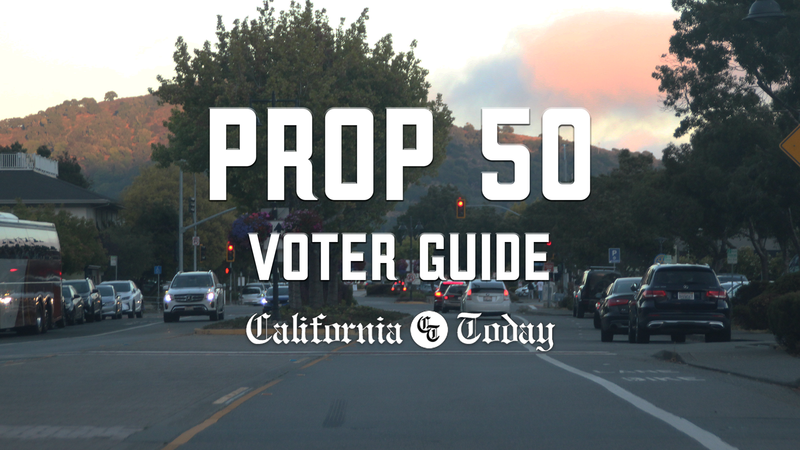California redistricting guide: Everything to know about Proposition 50
This November, Californians will vote on the "Election Rigging Response Act." Backed by Gov. Newsom, the measure would temporarily suspend the state’s independent redistricting commission and adopt a new map that could add up to five Democratic-leaning congressional seats ahead of the 2026 midterms.
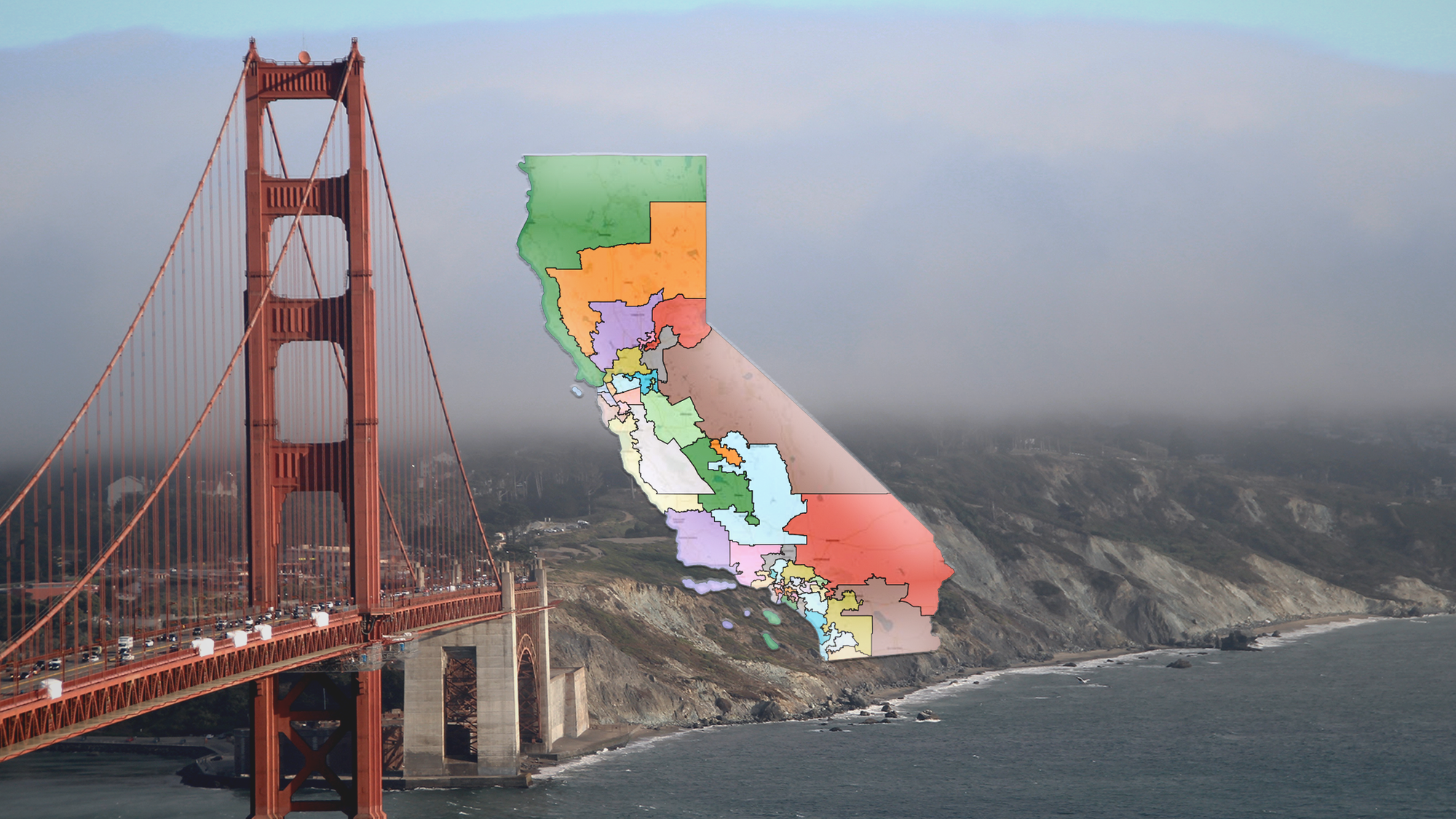
Texas Republicans have advanced a mid-decade congressional map at the urging of former President Donald Trump, aiming to secure five new GOP-leaning seats ahead of the 2026 midterms. In response, Gov. Gavin Newsom and California Democrats are moving to “fight fire with fire,” proposing a new map of their own that could add up to five Democratic-leaning districts.
That fight will now come directly before California voters. A special election has been scheduled for November 4, 2025, when the measure will appear on the ballot as Proposition 50, also known as the "Election Rigging Response Act." The outcome will determine whether California adopts the redrawn map in time for the 2026 elections.
Here's everything you need to know.
What Happened this August Sacramento
The pace of events in Sacramento accelerated dramatically this week, turning a months-long debate into binding law and a firm date on California’s electoral calendar. On Thursday, August 21, 2025, Gov. Gavin Newsom signed into law two bills that form the backbone of California’s mid-decade redistricting plan. At the same time, lawmakers finalized a constitutional amendment that will now head directly to voters.
The package has three moving parts, each playing a distinct role:
Assembly Bill 604 (AB 604), authored by Assemblymember Cecilia Aguiar-Curry, sets out the actual congressional districts that California would use if voters approve the ballot measure. It goes county by county, tract by tract, describing the proposed new map. Crucially, AB 604 is an urgency statute, meaning it took effect immediately when the governor signed it — but its provisions only become operative if voters approve the companion constitutional amendment.
Assembly Constitutional Amendment 8 (ACA 8), authored by Assembly Speaker Robert Rivas, provides the constitutional authority to temporarily suspend California’s independent Citizens Redistricting Commission for congressional lines. Without ACA 8, AB 604’s map would have no legal standing. The amendment was chaptered on August 21 and will now appear on the November ballot as Proposition 50, formally titled the Election Rigging Response Act.
Senate Bill 280 (SB 280), carried by Senator Sabrina Cervantes, establishes the special election itself. It sets November 4, 2025 as the statewide vote, appropriates funds from the General Fund to counties and the Secretary of State to cover costs, and details how polling places, vote centers, and ballot drop-off locations must be organized. It also makes smaller but significant adjustments to the June 2026 primary rules, such as prohibiting congressional candidates from using “incumbent” as their ballot designation if the new map is in effect.
By signing AB 604 and SB 280 into law on the same day ACA 8 was chaptered, Newsom and legislative leaders ensured that California’s machinery is aligned: the map is written, the ballot measure is set, and the election infrastructure is funded.
The rapid sequence reflected a sense of urgency. Just hours before Newsom signed the bills, Texas Republicans advanced their own partisan map through committee in Austin, underscoring the tit-for-tat dynamic. In his signing remarks, Newsom called the California plan a necessary defensive step, saying, “This is a reaction to an assault on our democracy in Texas.”
The result is that, less than a week after the Legislature first moved the constitutional amendment to the floor, California voters now have a date with history. On November 4, 2025, they will decide whether to approve Proposition 50 and adopt AB 604’s map — potentially reshaping the state’s role in the 2026 midterms.
Breaking Down the Three Key Measures
The redistricting package signed and advanced this week is not a single law but a three-part framework. Each measure performs a different function, and together they create the legal and procedural machinery for California’s unprecedented mid-decade map.
ACA 8: The Election Rigging Response Act
At the center of the package is Assembly Constitutional Amendment 8, known as the Election Rigging Response Act. This is the ballot measure voters will see in November, designated as Proposition 50.
- Purpose: Temporarily suspends the authority of California’s independent Citizens Redistricting Commission when it comes to congressional districts. Instead, the state would use the lines spelled out in AB 604.
- Trigger: Only takes effect if approved by a majority of voters on November 4, 2025.
- Duration: The temporary map would remain in place until 2031, when the commission is next scheduled to draw new districts following the 2030 census.
- Safeguards: ACA 8 assigns sole legal standing to the state Attorney General for defending the map in court, and gives the California Supreme Court exclusive jurisdiction over challenges — a design intended to prevent a patchwork of lawsuits in lower courts.
The amendment is framed explicitly as a response to Texas. Its findings section accuses President Trump and Republican lawmakers of attempting to “rig” the 2026 midterms through partisan mapmaking and declares the move an “emergency for our democracy.” That framing sets the political stage for the ballot campaign to come.
AB 604: The Map Statute
If ACA 8 is the constitutional key, then Assembly Bill 604 is the map itself. Signed by Gov. Newsom on August 21, it is an urgency statute that took effect immediately, though it only becomes operative if Proposition 50 passes.
- Content: AB 604 spells out each of California’s proposed congressional districts in legal detail, listing the counties and census tracts included.
- Impact: Analysts say the map could add up to five Democratic-leaning districts, primarily by consolidating urban and suburban communities with large Latino, Asian, and Black populations. Three of the proposed new districts would have Latino citizens as a majority of eligible voters.
- Limit: The law is temporary. Once the Citizens Redistricting Commission certifies its next map after the 2030 census, AB 604 is repealed.
For voters, the key takeaway is that AB 604 contains the lines that would actually govern their representation if Proposition 50 is approved.
SB 280: The Special Election Framework
The third piece of the puzzle is Senate Bill 280, which sets the terms of the November 4 special election. Without it, Proposition 50 could not reach voters in time for the 2026 cycle.
- Election Date: Formally calls a statewide special election for November 4, 2025.
- Ballot Designation: Assigns ACA 8 as Proposition 50 on the statewide ballot.
- Voting Infrastructure:
- Requires expanded vote centers and drop-off sites across California.
- Mandates that counties provide accessible, secure ballot boxes and polling options beginning in October.
- Establishes rules for consolidated polling places and disability access.
- Candidate Rules for 2026: Bars congressional candidates from using “incumbent” as a ballot label in the June 2026 primary if the new map is in effect — a change meant to avoid confusing voters when incumbents are running in newly drawn districts.
- Funding: Appropriates money from the state General Fund to cover county and state costs of running the special election.
By enacting SB 280, lawmakers ensured that the mechanics of the November vote — from funding to polling-place logistics — are in place.
With these three measures aligned, the path is clear: voters hold the final say. ACA 8 places the question on the ballot, AB 604 supplies the map, and SB 280 guarantees that the election happens this November under standardized rules.
What Proposition 50 Actually Means for Voters
When Californians head to the polls on November 4, 2025, the ballot will contain one high-stakes statewide question: whether to approve Proposition 50, the Election Rigging Response Act. Understanding exactly what that “Yes” or “No” means is critical.
What a “Yes” Vote Means
- Adopts the New Map: A “Yes” vote approves ACA 8, making the congressional districts described in AB 604 the law of the land for California’s U.S. House elections through 2030.
- Triggers Immediately: The new lines would apply starting with the June 2026 primary and the November 2026 general election.
- Temporary Suspension of the Commission: The Citizens Redistricting Commission would remain intact but sidelined for congressional maps until the next redistricting cycle in 2031. It would continue to oversee State Senate, Assembly, and Board of Equalization districts.
- Court Oversight: Legal challenges to the map could only be brought by the Attorney General, and only before the California Supreme Court — a move designed to streamline and centralize litigation.
- Impact on Representation: Analysts estimate the map could create up to five additional Democratic-leaning districts, largely by consolidating diverse urban and suburban communities that had previously been split.
What a “No” Vote Means
- Keeps Current Maps in Place: California would continue using the congressional districts drawn by the independent Citizens Redistricting Commission in 2021.
- No Mid-Decade Change: Voters would send a clear signal that they want to maintain the state’s nonpartisan redistricting system, even as Texas and other Republican-led states redraw their maps.
- Status Quo Until 2031: The next chance to change California’s congressional districts would come after the 2030 census, when the commission reconvenes as scheduled.
How It Will Appear on the Ballot
Under SB 280, Proposition 50 will be presented with special clarity requirements:
- The Legislative Analyst’s Office (LAO) must include side-by-side visual depictions of both maps in the state voter guide:
- The 2021 commission-drawn map now in effect.
- The 2025 AB 604 map proposed under Proposition 50.
- The guide will also include a hyperlink to the full text of AB 604, allowing voters to check the district-by-district breakdown if they wish.
- The ballot label will not include lists of official supporters and opponents, unlike most measures, to simplify the presentation.
Why This Matters
For most voters, the real-world impact will be local. Depending on where you live:
- Your community might stay whole under one district instead of being split across multiple.
- You might find yourself in a newly drawn, more competitive district.
- Or you might move into a district designed to consolidate a particular demographic or political base.
Put simply: Proposition 50 is not an abstract fight about national politics. It will determine who represents your neighborhood in Congress for the next five years.
The National Redistricting Chessboard
California’s Proposition 50 isn’t happening in a vacuum. It’s part of an unprecedented wave of mid-decade redistricting fights that could reshape control of the U.S. House before voters even cast ballots in 2026.
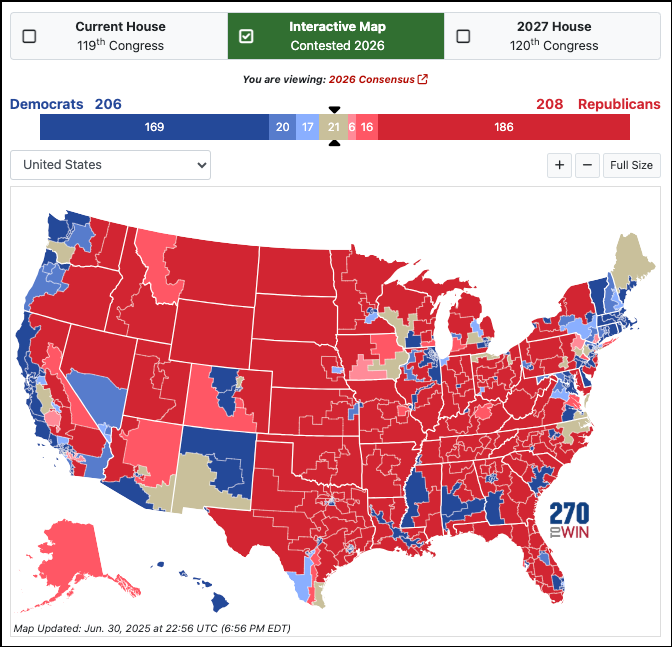
Texas: The Spark
At the urging of former President Donald Trump, Texas Republicans advanced a new congressional map this month that would create up to five additional GOP-leaning seats. Trump framed it bluntly: redraw now to lock in a House majority for Republicans, regardless of how swing districts might vote in 2026.
The Texas plan has cleared the state House and awaits a final vote in the Senate. Gov. Greg Abbott is expected to sign it. Once that happens, Texas alone could account for the same five-seat swing Democrats are now seeking to counter with Proposition 50.
Other Republican-Led States on Deck
Texas isn’t the only state moving. Trump has urged allies in at least half a dozen Republican-controlled legislatures to redraw maps before 2026:
- Missouri: GOP lawmakers are weighing dismantling Rep. Emanuel Cleaver’s Kansas City district, flipping it red.
- Ohio: With unique redistricting rules that allow for mid-decade revisions, Republicans could target three Democratic incumbents and net two to three seats.
- Florida: A select committee has been established to consider another redraw, potentially yielding one to two GOP pickups.
- Indiana, New Hampshire, Nebraska, South Carolina: All are considering or quietly studying whether to take up Trump’s call.
If even half of these efforts succeed, Republicans could net 10–12 additional House seats before the midterms.
Democrats’ Countermoves
Democrats, by contrast, have few opportunities. Most blue states either have independent commissions (like California) or constitutional limits on mid-decade changes. Still, two options are in play:
- California (Prop 50): Up to five new Democratic-leaning seats, contingent on voter approval.
- Illinois: Lawmakers have floated the idea of squeezing out one more Democratic district, though party leaders are hesitant to reopen such a fraught process.
Together, those represent only 5–6 possible Democratic gains — about half of what Republicans could achieve.
Why the Stakes Are So High
The U.S. House is currently divided 219–212 in favor of Republicans, with four vacancies. That razor-thin margin means just a handful of seats could decide control in 2026.
- If Republicans succeed in Texas and beyond, they could secure their majority before a single toss-up race is decided.
- If California voters approve Proposition 50, Democrats would gain their only real counterweight to GOP moves in Texas, Florida, and Ohio.
In effect, the House majority could be determined not by the outcomes of competitive races but by which states redraw their maps in the next 12 months.
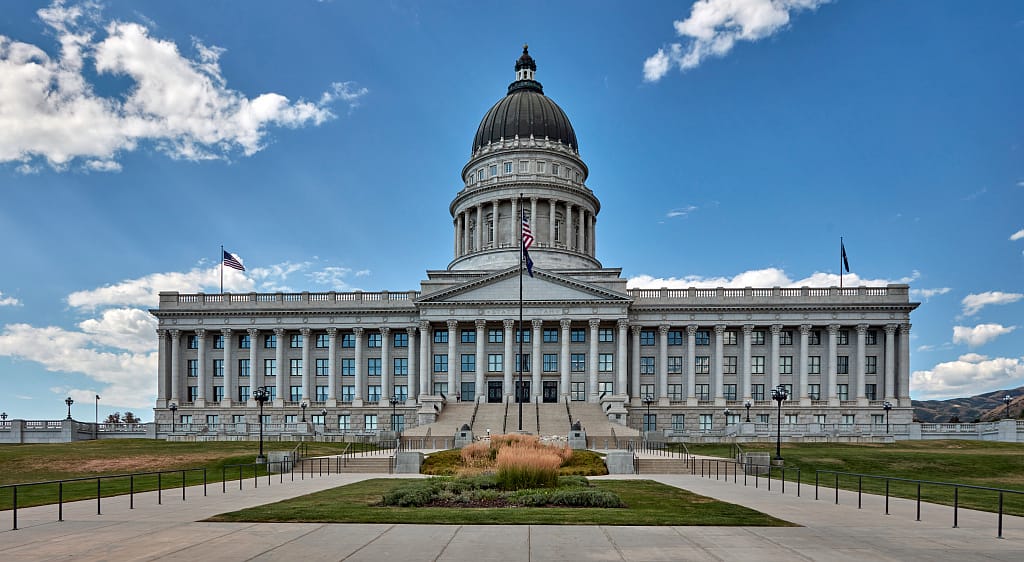
How California’s Proposed Map Would Work
California’s Proposition 50 centers on Assembly Bill 604 (AB 604), which spells out the actual district lines voters will decide on this November. Together with the constitutional amendment ACA 8, it represents the first time in modern history that Californians, not the state’s independent commission, will directly approve a congressional map.
What the AB 604 Map Does
- Adds up to five new Democratic-leaning districts by consolidating diverse urban and suburban areas.
- Creates several majority-Latino districts and strengthens Asian and Black representation in others, reflecting demographic realities in Los Angeles, the Bay Area, and the Inland Empire.
- Keeps county boundaries more intact in some areas (for example, along the Central Coast) while stretching inland districts over larger territories to balance populations.
- Remains temporary — the independent Citizens Redistricting Commission will resume its normal authority in 2031.
Regions to Watch
- Los Angeles County: Multiple districts would be redrawn more compactly, creating new opportunities for Latino and Asian representation.
- Bay Area & Silicon Valley: Urban cores are consolidated, potentially freeing up a seat that leans strongly Democratic.
- Inland Empire (Riverside/San Bernardino): A new Democratic-tilting seat is carved from growing suburban communities.
- Central Valley: Remains highly competitive, but Latino voter strength is increased in certain reconfigured districts.
- Northern California: Largely unchanged, though rural districts stretch across wider areas.
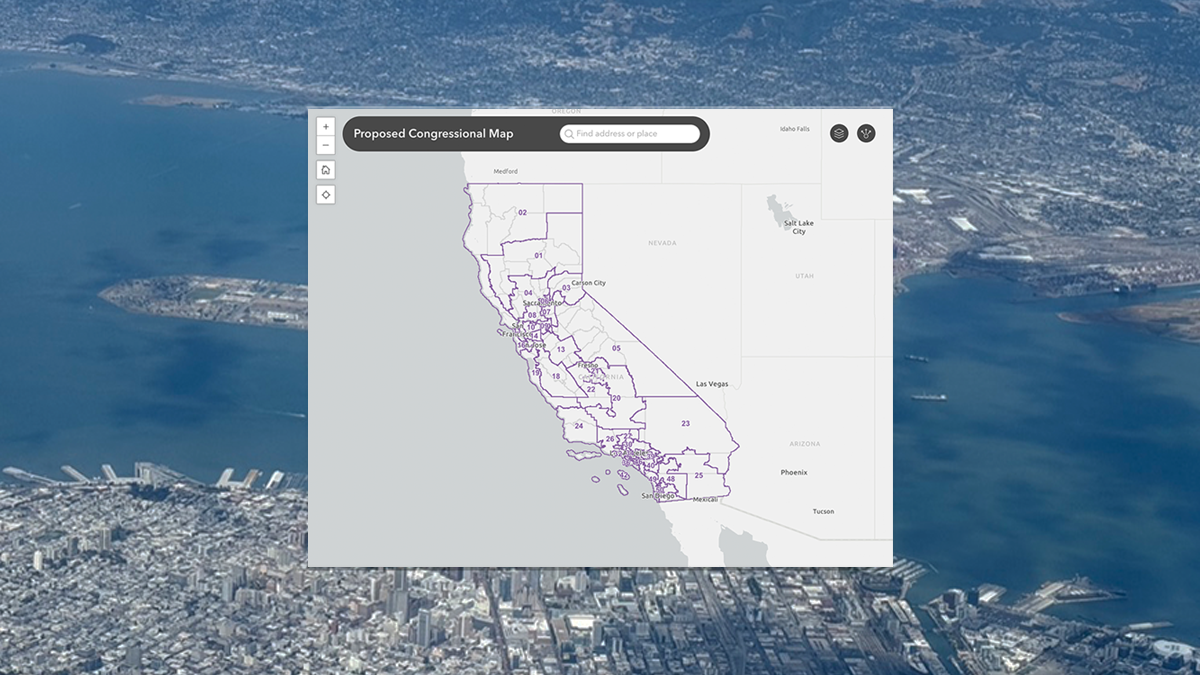
Checking Your Own District
For the first time, Californians can use an interactive map released by the Governor’s office to zoom into their city or neighborhood and see how the proposed boundaries compare to today’s lines.
By exploring the tool, voters can quickly see whether their community is:
- Kept whole,
- Split into multiple districts, or
- Paired with new regions.
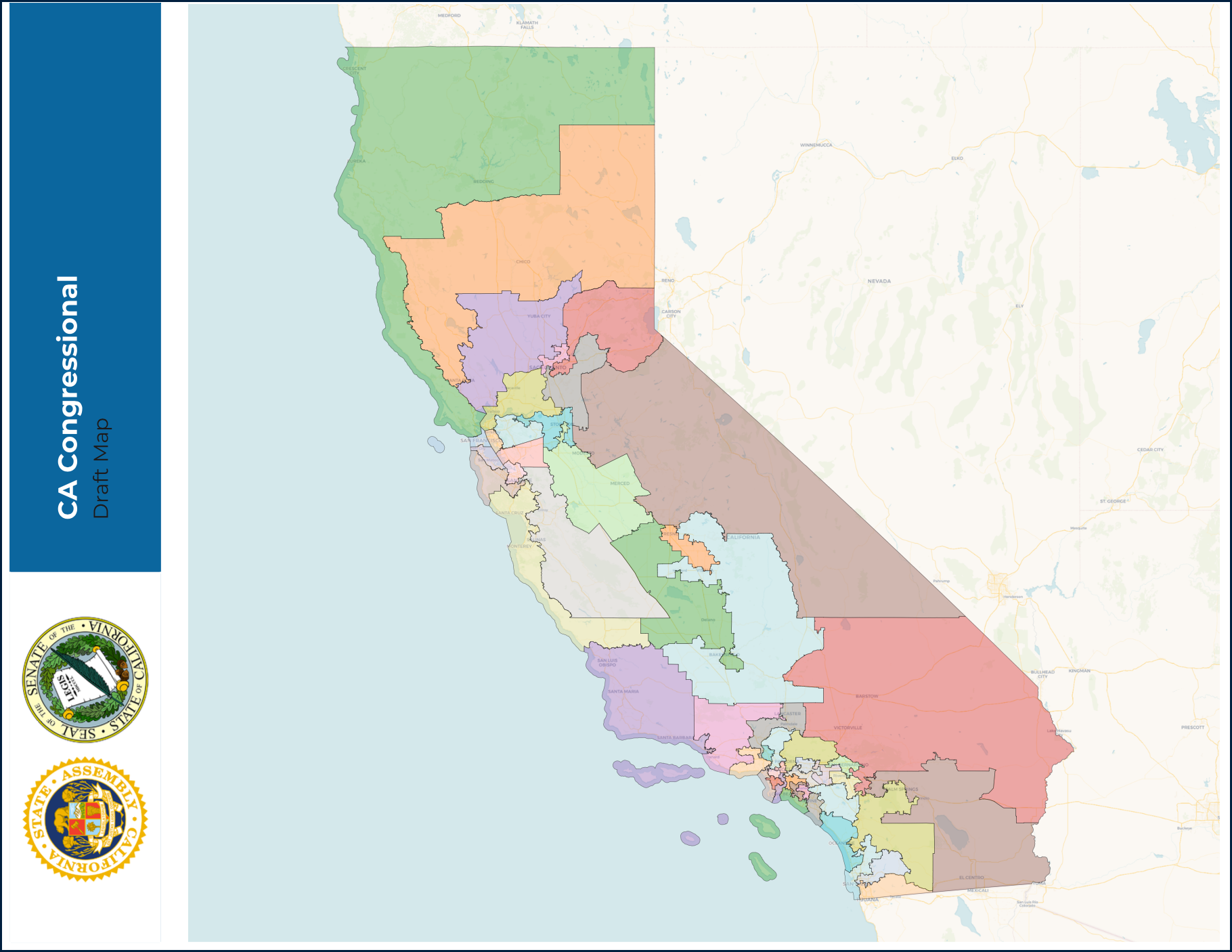
What Has to Happen Before the Map Takes Effect:
1) Voters must approve Proposition 50 on November 4, 2025
ACA 8 (the Election Rigging Response Act) appears on the statewide special-election ballot as Proposition 50.
The state voter guide will include side-by-side visuals of the current 2021 commission map and the proposed AB 604 map, plus a link to the full AB 604 text.
Counties will run expanded in-person options (vote centers/polling place consolidations) and ballot drop-off sites through late October into Election Day, with state funding to cover costs.
Certification follows special timelines: counties can’t certify before the 28th day after the election; voters have until the 26th day to cure certain mail-ballot signature issues.
2) If Prop 50 passes, AB 604’s map becomes operative for 2026
AB 604 is already law as an urgency statute; voter approval of Prop 50 is the switch that makes its district lines govern congressional elections.
The new districts would apply starting with the June 2, 2026 statewide direct primary and the November 2026 general election.
Administrative ramp-up dates:
- By December 19, 2025, the Secretary of State must release the nomination calendar and make in-lieu filing-fee petition forms available (with proportional signature reductions due to compressed timelines).
- The Secretary of State must also determine feasibility for publishing party-registration counts by congressional district and, if needed, issue a supplemental statewide list no later than the 88th day before the primary.
3) Litigation posture if Prop 50 passes
ACA 8 assigns sole standing to the California Attorney General to defend the map; challenges go directly and exclusively to the California Supreme Court.
Unless a court orders otherwise, implementation proceeds on the 2026 timetable.
4) Special 2026 primary rules tied to the mid-decade change
For the June 2026 primary, congressional candidates may not use “incumbent” as a ballot designation (intended to reduce confusion under new lines).
Filing deadlines adjust if no sitting member files in a newly configured district.
These candidate-label and deadline tweaks become operative only if Prop 50 takes effect and at least one other state adopts a new congressional map taking effect after August 1, 2025.
5) What if Prop 50 fails?
California keeps using the 2021 Citizens Redistricting Commission congressional map through 2030.
The commission remains in full control of congressional line-drawing until it reconvenes for the 2031 cycle.
6) Is there a “Texas first” trigger?
Earlier public framing emphasized a conditional, “if Texas redraws, California responds” approach.
The constitutional text filed on August 21, 2025 ties California’s move to Texas in its findings but does not require Texas to act as a legal precondition for adopting AB 604. Prop 50 approval by voters is the controlling trigger for using the new map.
Separate, narrower conditional language exists for certain 2026 candidate-label and deadline rules (see point 4).
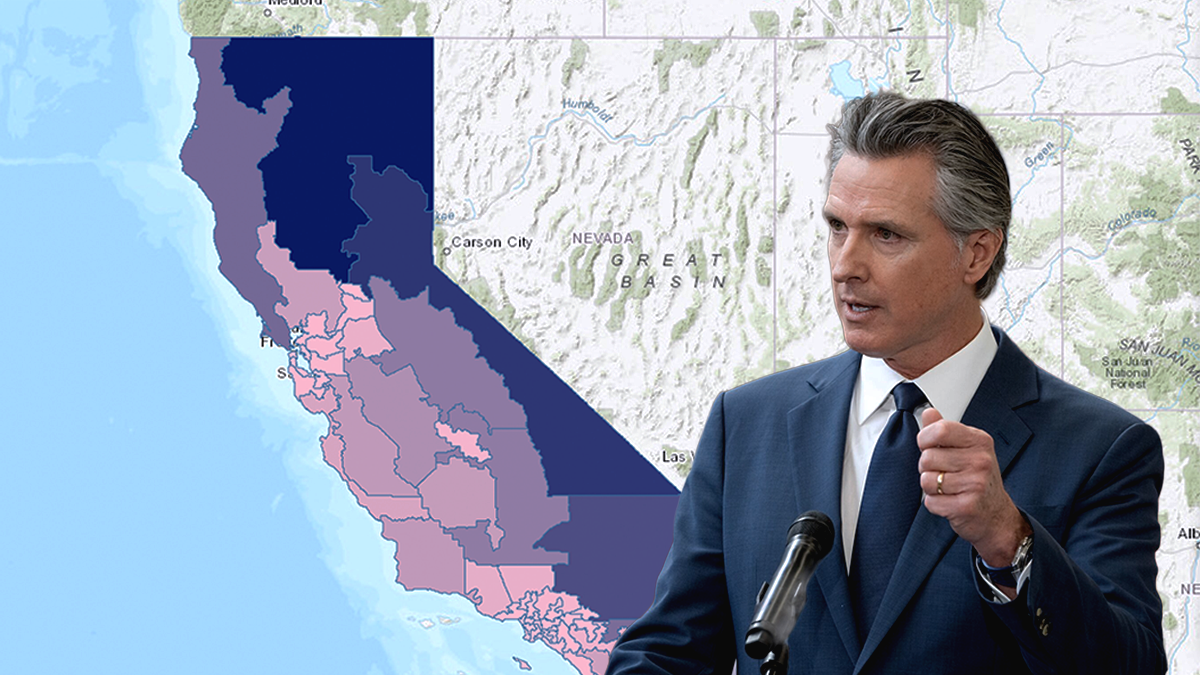
The Political and Legal Battles Ahead:
Lawsuits and where they’ll land:
California Republicans have already filed suit and sought a federal investigation into the package; more challenges are expected as ballot materials are finalized and again if voters approve Prop 50.
If Prop 50 passes, ACA 8 channels state-law challenges straight to the California Supreme Court and gives the Attorney General sole standing to defend the map. That limits forum-shopping and accelerates timelines, but it cannot block separate federal lawsuits in U.S. District Court.
Expect two tracks if litigation proceeds:
- State track: claims about California constitutional process, ballot mechanics, or compliance with ACA 8/AB 604;
- Federal track: claims alleging racial gerrymandering or Voting Rights Act issues (partisan gerrymandering claims are generally non-justiciable in federal court after Rucho).
Likely legal arguments you’ll hear:
- Proponents (State/Democrats): Voter-approved constitutional amendment can temporarily supersede the commission’s congressional authority; AB 604’s districts are population-balanced and reflect communities of interest (including majority-minority VAP districts); ACA 8 lawfully centralizes review to the state high court to ensure uniformity and speed.
- Opponents (GOP/good-government groups): The package undermines California’s “gold-standard” independent commission; the ballot measure is an extreme mid-cycle override prompted by partisan aims; potential single-subject or procedural objections to how the measures were fast-tracked; and—on the merits—claims of racial sorting or dilution in specific districts.
Injunction scenarios and the 2026 clock:
- Pre-election: Expect skirmishes over ballot title/summary, translations, and the voter guide. SB 280 sets short windows (eight days) for public examination of the condensed label and certain translations; challenges must be filed inside those windows, which compresses litigation into late August/September.
- Post-election: If Prop 50 passes, opponents will likely seek an immediate stay while merits are briefed. ACA 8’s design (AG as sole defender; CA Supreme Court original jurisdiction) is intended to produce a fast, single ruling. Any federal injunction would come from U.S. District Court and could upend the SB 280 timeline.
- Deadlines that matter: Candidate filing and voter-registration party counts begin moving by December 19, 2025 under SB 280. A late injunction could force emergency remedies (e.g., reverting to the 2021 commission map or modest administrative extensions).
The ballot campaign—messages, messengers, money:
- Yes on Prop 50: Led by Newsom and legislative Democrats, with national Democratic figures already signaling support. Core message: “fight fire with fire,” neutralize Texas/other GOP mid-cycle maps, and protect representation for diverse urban/suburban communities.
- No on Prop 50: California Republicans and some reform groups argue this erodes the independent commission, invites tit-for-tat gerrymandering, and sets a precedent that will haunt future cycles—“you don’t save the commission by suspending it.”
- Voter information environment: SB 280 requires the Legislative Analyst to include side-by-side maps (2021 vs. AB 604) in the voter guide and a link to AB 604’s full text. The ballot label omits supporter/opponent lists, so paid media and earned media will be even more central to framing.
Federal overlay—what could still trigger a block:
- Racial-gerrymandering claims: Plaintiffs could assert that certain districts sort voters predominantly by race without meeting strict scrutiny. California will counter with traditional criteria and community-of-interest rationales. Expect expert reports on compactness and the Gingles preconditions where minority opportunity districts are concerned.
- VRA Section 2: Opponents may argue the new map either packs or cracks minority voters in specific regions; proponents will point to AB 604’s stated intent and district demographics as compliance evidence.
Practical watch-list between now and November:
- Final ballot title/summary and voter-guide maps from the LAO.
- Any pre-election writs over the condensed label or translations (eight-day windows).
- Fundraising and ad buys by national redistricting groups on both sides.
- Early lawsuits testing ACA 8’s venue/standing provisions.
- County implementation milestones (vote centers, drop boxes) and any SB 280 waiver requests adjudicated by the Secretary of State.
Bottom line:
The package is engineered to withstand a fast, coordinated legal barrage while keeping the 2026 calendar intact. But a single federal injunction on a narrow set of districts—or a statewide stay from the California Supreme Court—could scramble timelines. Politically, the fight will be framed as defending democracy vs. defending the commission; legally, it will turn on process, venue, and a handful of litigated districts rather than abstract theory.
What This Means for California Voters
For all the national headlines about Trump, Texas, and Newsom, the November 4 special election comes down to a very local question: what does this mean for you and your community?
Your district may change
If Proposition 50 passes, California’s 52 congressional districts would be replaced by the new lines contained in AB 604. That means:
- Some counties are kept more intact than before, while others see new splits to balance populations.
- Urban and suburban areas — Los Angeles, the Bay Area, San Diego — are drawn more compactly, often consolidating Democratic-leaning voters.
- Inland and rural regions stretch wider, but some are reshaped enough to alter political balance.
- Several new districts are majority-Latino, and others are designed with significant Asian and Black populations. For the first time, three districts would have Latino citizens making up more than half of eligible voters.
The state has released an interactive map and a full Redistricting Atlas so voters can zoom in to see how their neighborhood or county is affected.
What you’ll see on your ballot
- The measure will appear as Proposition 50.
- The ballot question will ask whether California should temporarily adopt the congressional districts laid out in AB 604 until the Citizens Redistricting Commission draws new lines in 2031.
- The state voter guide — mailed to all registered voters — will include:
- Side-by-side maps of the current 2021 lines and the proposed AB 604 districts.
- A link to the full text of AB 604.
- An impartial analysis from the Legislative Analyst’s Office explaining the legal changes under ACA 8, also called the Election Rigging Response Act.
Key dates and logistics
Thanks to SB 280, the special election will run like a statewide general election, with new requirements:
- October 7, 2025: Ballot drop-off locations must open in every county.
- October 25 – 31, 2025: Counties must open at least one vote center per 60,000 registered voters.
- November 1 – 4, 2025: That expands to one vote center per 30,000 voters, open daily through Election Day.
- November 4, 2025: Polls open 7 a.m. – 8 p.m. statewide.
- Voters who use vote-by-mail will have until November 4 to postmark ballots, and until November 30 to cure signature issues.
Why it matters beyond the ballot box
- Control of Congress: California’s redraw could add up to five Democratic-leaning seats — potentially decisive in a House where Republicans currently hold a razor-thin majority.
- Representation: The lines determine whether your community is kept intact, paired with neighboring regions, or split between multiple districts.
- Precedent: Voters will decide whether California’s independent redistricting commission can be temporarily suspended in the name of countering gerrymandering elsewhere.
The takeaway for voters
This isn’t just about Sacramento vs. Washington. It’s about whether California communities — from the Central Valley to the South Bay — go into the 2026 midterms under the current 2021 commission map or the new AB 604 map drawn under Newsom’s emergency plan.
For voters, the November 4 special election is the only chance to weigh in.
The Stakes for 2026 and Beyond
The November 4 special election is not just about California’s borders on a map. It’s about control of the U.S. House of Representatives and the rules of redistricting for the decade to come.
A razor-thin national balance
As of August 2025, Republicans hold 219 seats to Democrats’ 212, with four vacancies. That margin means that just a handful of districts could determine control in the 2026 midterms.
If Proposition 50 passes, California could add up to five new Democratic-leaning districts, reshaping the national battlefield. That would counterbalance Republican gains in Texas, where Gov. Greg Abbott’s new map is designed to create five additional GOP seats at Donald Trump’s urging.
Elsewhere, Republicans are weighing mid-decade redraws in Ohio, Missouri, Indiana, and Florida — maps that together could net them 10–12 seats. Democrats’ only other realistic opportunity outside California is Illinois, which might squeeze out one new seat.
Best- and worst-case scenarios
Analysts have already gamed out extreme outcomes:
- Republican high-water mark: If Republicans win all toss-up seats and secure maximum redistricting gains, they could enter 2027 with 241 seats — a 47-seat majority.
- Democratic high-water mark: If Democrats sweep toss-ups and California + Illinois deliver, they could win 233 seats — a 31-seat majority.
- Most likely range: Forecasts suggest Republicans ending up with 218–220 seats and Democrats with 211–212, leaving the GOP with a narrow but durable edge.
In that scenario, California’s move becomes the single biggest lever Democrats have. Without it, their path to a majority depends on winning nearly every toss-up race — an uphill battle in a polarized environment.
A precedent for mid-decade redistricting
If voters approve Proposition 50, California will become the first state in U.S. history to let its people directly approve a mid-cycle congressional map. That could set a precedent for other blue states to follow — or, just as likely, invite a wave of legal challenges arguing that it undermines the principle of stable, decennial redistricting.
Even within California, the measure is carefully limited. It sunsets in 2030, when the Citizens Redistricting Commission will again draw new lines after the census. Still, critics warn that suspending the commission, even temporarily, chips away at the “gold standard” reputation California has cultivated since voters created the CRC in 2008 and 2010.
Beyond 2026
Whatever happens in November, the effects will echo well beyond the midterms. If California voters back Prop 50, it signals that even states with strong independent-commission traditions are willing to bend their rules in the face of partisan hardball elsewhere.
If they reject it, Democrats will have to rely on toss-up races and court fights in other states, while Republicans will continue to benefit from freer hands in places like Texas and Florida.
Either way, the 2026 midterms are shaping up as a referendum not just on Congress, but on the very rules of how Americans choose their representatives.
What California Voters Need to Know
The fight over California’s congressional map is about more than political gamesmanship in Sacramento or Austin. It is about whether voters — not politicians — should decide how the state responds to one of the most aggressive mid-decade redistricting pushes in modern U.S. history.
What’s on the line in November
On November 4, 2025, Californians will vote on Proposition 50, a constitutional amendment nicknamed the Election Rigging Response Act. A “yes” vote would:
- Approve the new congressional map drawn in AB 604.
- Put those lines into effect for the 2026 and 2028 elections, until the Citizens Redistricting Commission draws new lines in 2031.
- Potentially add up to five Democratic-leaning seats, reshaping the balance of power in Washington.
A “no” vote would:
- Keep California’s current 2021 commission-drawn lines in place through 2030.
- Preserve the state’s reputation for independent, nonpartisan redistricting — but leave Democrats with fewer tools to counter GOP redraws in Texas, Ohio, Florida, and beyond.
What happens next
- Ballots go out in early October. Every registered voter will receive one by mail.
- Vote centers and drop boxes open statewide starting October 7, expanding through the end of the month.
- Election Day is November 4, with polls open 7 a.m. – 8 p.m. statewide.
- Voters will have until November 30 to resolve any ballot signature issues.
Why your vote matters
The November special election is unprecedented: no state has ever asked voters directly to approve a mid-cycle congressional map. The outcome will shape not only California’s role in the 2026 midterms but also the precedent for how states across the country handle redistricting in the face of partisan pressure.
In the end, Californians will decide whether to fight fire with fire — or hold the line on independent redistricting.
Your ballot this fall is not just about who represents you in Congress. It’s about how the rules of representation are written, and whether California once again sets the standard for democracy in America.






